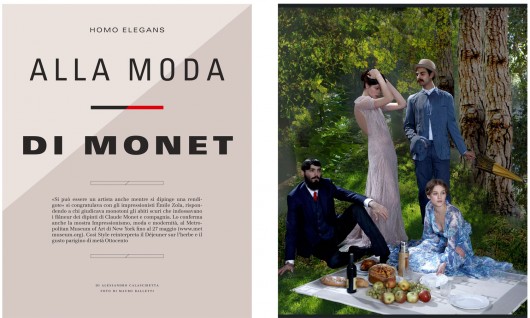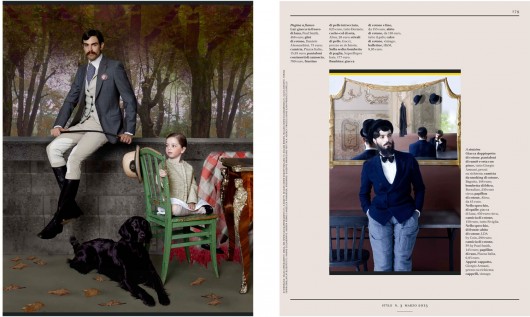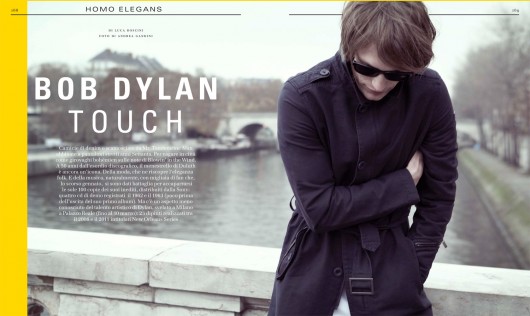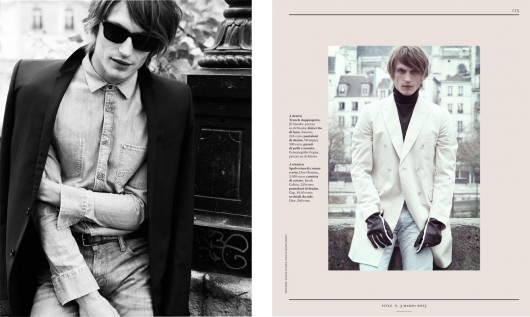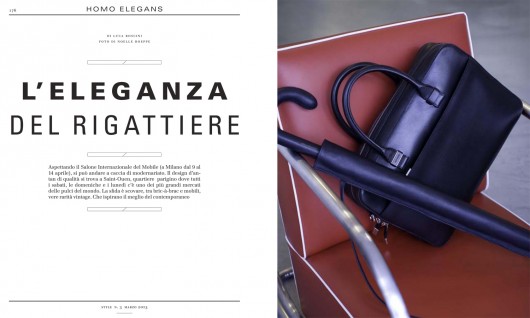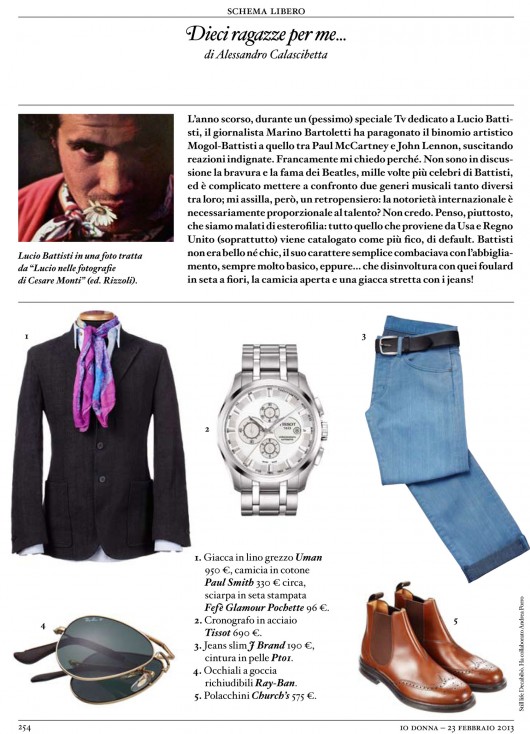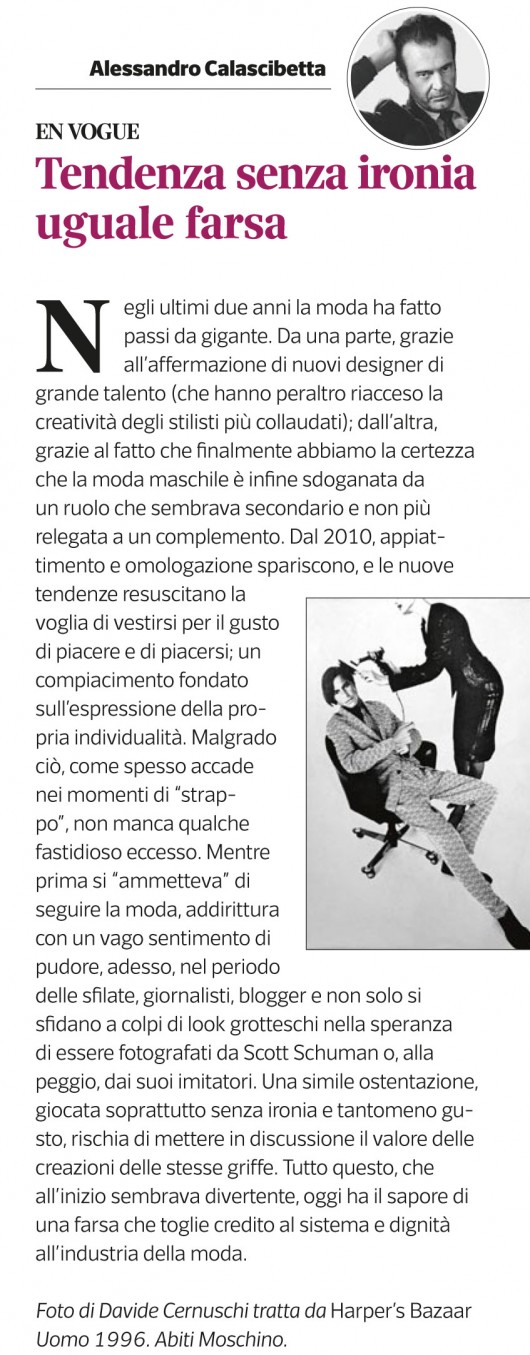
In the past 2 years fashion made great progess. This is, in part, because of the success obtained by talented new designers (which are helping the best established designers pushing the boundaries of creative inspiration) and is in part because now is clear that menswear doesn’t have a subordinate role in fashion and that it’s not just a complement. Since 2010 the standardization of fashion has been disappearing and new trends have been bringing up our desire to dress to impress, others and ouselves, which is a pleasure based on pure self-expression and individuality. However there are always ecceptions, like certain annoying fashion excesses. If before it was almost a “shame” admitting to be a fashion follower , nowadays during fashion week journalists, fashion bloggers and so on have been fighting eachother in a battle of ridiculous looks in the hope of being fotographed by Scott Shuman or, at least by any of his imitators. Such parade, if played without any irony or taste, could call into question the value of the brand’s fashion creations themselves. All of this, which at first seemed funny, today feels like a farce taking credit off the system and degrading the fashion industry. Picture by Davide Cernuschi from Harper’s Bazaar Uomo, 1996. Total look Moschino.






